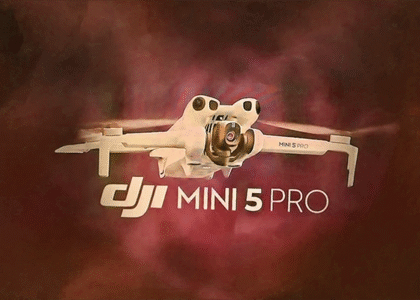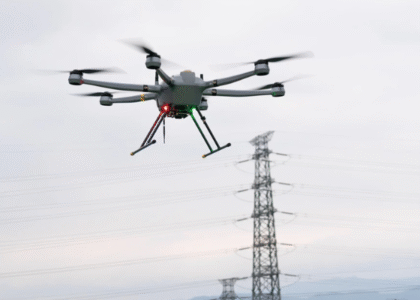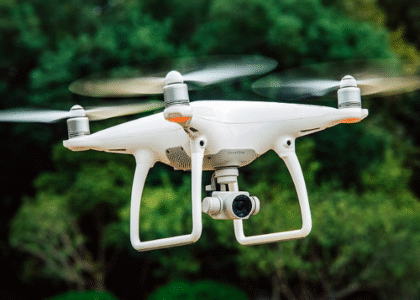On an overcast March morning in Mumbai, the managing committee of Sunshine Residency, an eight‑storey, 30‑flat apartment complex in Andheri gathered anxiously after two tenants reported sudden ceiling drips. With monsoon clouds looming, the facility manager hesitated to send workers up on rickety ladders, fearing both safety incidents and a hefty scaffolding bill. Instead, they engaged UrbanRoof’s drone inspection team from Pune.
Within 45 minutes, the quadcopter had silently traced every ridge and valley of the sprawling rooftop, its thermal sensor pinpointing 12 cool‑spot leak origins hidden beneath moss‑covered tiles. High‑resolution imagery revealed corroded flashing around a previously unnoticed HVAC vent. By noon, the committee had a detailed repair plan with exact locations and replacement‑tile counts delivered in a geo‑tagged, annotated report. The result? Sunshine Residency avoided a full‑roof scaffold contract, cutting their repair cost by ₹1.8 lakh (nearly 30%) and eliminating risky climb‑ups for maintenance staff.
This success story highlights how drone roof inspections are redefining roof repair and roof service in India saving time, slashing expenses, and keeping maintenance teams safely on the ground.
1. The Need for Efficient Roof Repair and Roof Service
Traditional Challenges:
In the monsoon‑soaked months, water penetration accelerates, and roof leaks can wreak havoc on interiors, peeling paint, warped beams, even electrical hazards. Conventional inspections require scaffolding rentals (often ₹5,000 to ₹10,000 per day), manual climb‑ups on unstable surfaces, and multiple spotters for safety. These elements not only drive home repair costs sky‑high but also introduce liability risks: slips, falls, and costly insurance claims.
Business Impact:
For property managers juggling dozens of rooftops, whether a 20‑unit apartment complex in Pune or a string of retail outlets in Chennai, the downtime and labor coordination translate directly into lost revenue. An unscheduled leak repair can disrupt tenant operations, trigger emergency contracts at premium rates, and damage brand reputation.
Why Drones Matter:
By replacing ladders with LiDAR–equipped UAVs and thermal cameras, inspections become faster, safer, and more cost‑predictable. A single operator can survey a 10,000 sq ft roof in under an hour, compared to a full day’s work for a three‑person crew. Early issue detection avoids small leaks morphing into structural damage, reducing repair bills by as much as 30%.
2. How Drone Roof Inspections Work
Hardware & Sensors
- High‑Resolution RGB Cameras: Modern drones from DJI capture 20+ MP images at oblique and nadir angles. This multi‑angle approach uncovers missing shingles, cracked tiles, or blocked gutters, details that dictate whether you need a minor patch or full retiling.
- Thermal Imaging Sensors: DJI’s Mavic 3 maps temperature variations. In a recent Mumbai warehouse survey, thermal scans revealed hidden roof‑deck insulation failures costing an additional ₹1 lakh if left undetected .
- LiDAR Modules (Optional): Laser‑based scanners on drones such as DJI’s Zenmuse L2 generate dense 3D point clouds, enabling volumetric measurement of sagging areas or structural deformations which are critical for industrial facility roofs.
Software & Data Processing
- Flight Planning & Control: Tools like Pix4D Capture and DroneDeploy’s mobile app automate grid or waypoint missions, ensuring consistent image overlap (typically 70% forward, 60% side). Pre‑programmed flight paths reduce operator error and guarantee full roof coverage.
- Image Stitching & Analysis: Once imagery is uploaded, platforms stitch hundreds of photos into orthomosaics. Overlay thermal maps onto visual surveys to highlight moisture‑prone zones. Advanced analytics can auto‑detect delamination or blistering by comparing pixel‑level changes over time.
- Reporting & Integration: Final outputs include georeferenced orthomosaics, 3D models, annotated damage hotspots which are exported to PDF or CAD formats. Integration with CMMS (e.g., SAP PM, IBM Maximo) or ERP systems triggers automatic work orders, linking inspection data directly to maintenance workflows.
3. Cost Savings & ROI
Service Fee Comparison
- Drone Inspections: ₹15,000 to ₹50,000 per roof (depending on size, sensor suite, and complexity).
- Traditional Methods: ₹5,000 to ₹15,000 per day for scaffolding + ₹2,000 to ₹5,000 per worker per day.
A typical two‑hour drone survey replaces 8 to 10 man‑hours of manual labor, even factoring in technology rental, overall costs drop by 20 to 30% on average .
Time & Labor Efficiency
- Speed: A suburban villa roof (2,000 sq ft) can be fully surveyed in 20 to 30 minutes.
- Labour Reduction: One certified drone pilot plus one ground assistant replaces a three‑person crew.
- Safety Savings: Zero ladder‑related insurance claims reported in recent Delhi housing society audits.
Case Study: Mumbai Apartment Complex
In March 2025, a 30‑unit complex engaged UrbanRoof (Pune) for a thermal drone survey. The team identified clogged drainage valleys leading to 12 leak points enabling targeted repairs that saved ₹1.8 lakh versus a full re‑roofing estimate of ₹5 lakh .
4. Applications in India
Residential Properties
Homeowners in Bangalore and Hyderabad are adopting drone scans for pre‑monsoon checkups. Thermal data reveals damp spots near skylights, while high‑res images inspect tile integrity, often catching damage wrought by last year’s storms before visible signs emerge.
Commercial Buildings
Facility managers at IT parks in Pune schedule quarterly drone inspections as part of their SLAs. Detailed reports help justify maintenance budgets to CFOs by quantifying risk exposure, no more surprise leak claims during critical client demos.
Industrial & Solar Installations
Solar EPC firms in Gujarat deploy drones to scan panel arrays and rooftop structures simultaneously. Infrared imaging pinpoints string‑level hotspots, while roof surveys assess mounting‑rail corrosion optimizing O&M costs and slashing unscheduled downtime.
5. Regulatory Landscape in India
Below is the updated timeline of DGCA regulations for commercial drone operations:
- 2018: Drone Rules 1.0 issued. Hobby‑only operations allowed.
- 2019: Digital Sky Platform launches for UIN and UAOP applications.
- 2021: Drone Rules 2021 simplify categories, introduce NPNT compliance.
- June 2025: Drone Rules 2.0 roll out streamlined BVLOS approvals and payload increases, enabling more complex roof‑inspection use cases.
6. Best Practices for Drone Roof Inspections
- Pre‑Flight Clearance: Secure UIN/UAOP via Digital Sky, obtain local NOTAMs if within 5 km of airports.
- Certified Pilots: Verify each operator’s Remote Pilot Certificate and conduct quarterly refresher training.
- Safety Protocols: Employ geofencing, maintain VLOS or have BVLOS waivers; always carry a spotter for emergency intervention.
- Data Management: Encrypt all flight logs and imagery; store backups in GDPR‑ and India‐Personal Data Protection Act‑compliant clouds.
- Workflow Integration: Automate report ingestion into your CMMS, trigger digital work orders tagged by GPS coordinates for repair crews.
Closing the Roof File
Drones have moved from tech novelty to indispensable tools in India’s roof repair and roof service sectors leading to faster surveys, safer operations, and significant savings on home repair budgets. With DGCA’s 2025 regulatory updates, more complex BVLOS and payload‐heavy inspections will become routine. To reap these benefits, partner with FlyandTech, India’s premier drone retailer and training provider. From the latest FPVs to an expert‐led pilot course, FlyandTech equips you to slash costs, mitigate risks, and elevate your property management capabilities.
FAQs
- How much does a drone roof inspection typically cost in India?
Expect ₹15,000 to ₹50,000 depending on roof size and sensor requirements. - Do I need special permissions for a drone roof survey?
Yes, register on Digital Sky, secure a UIN/UAOP, and ensure your pilot holds a DGCA Remote Pilot Certificate. - What damage types can thermal imaging detect?
Thermal sensors catch water ingress, insulation failures, and heat leaks around vents or skylights. - Can drone inspection data integrate with my ERP or CMMS?
Absolutely, most platforms export orthomosaics, 3D models, and reports in PDF/CAD formats compatible with leading systems.
What future advances should property managers watch?
AI‑driven defect detection, swappable payloads for multi‑modal surveys, and fully autonomous BVLOS missions are on the horizon.







